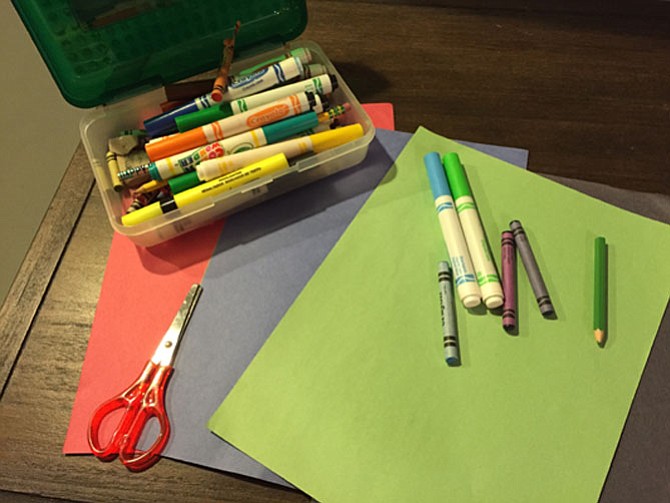Art supplies and games that allow for creative play can be an important part of unstructured free time. Photo by Marilyn Campbell.
What was once a time for catching fireflies, swimming and exploring has evolved into a period of elite day camps, academic enrichment classes and top-dollar sports clinics.
For many children, summer is packed with so many activities that it can hardly be called a break, say local educators, reminding parents of the benefits of unregulated play.
“Camps and activities are fine in moderation because children need structure,” said Andrew Clarke, Ph.D., an Arlington-based child psychologist. “But allowing children to have free time during the summer is important for their self-confidence and overall well-being. … Children can become enriched simply by being allowed to explore their own environments.”
NOT ALL CHILDREN are naturally self-directed, but parents can provide minimal structure through which children can gain the benefits of unstructured free time.
For example, help children develop a list of potential activities that might interest them. This could assist children who have difficulty thinking of things to do on their own or who might be prone to saying “I’m bored” when faced with free time and no planned activities.
“I recommend giving kids suggestions of various activities and having them choose, said Stacie B. Isenberg, Psy.D., a child psychologist based in Bethesda, Md. “Sometimes it is helpful to make a list together with them and post it on the refrigerator or other prominent place.”
Isenberg suggests including activities such as playing board games, reading books, hula hooping, kicking around a ball, blowing bubbles, doing mazes, puzzles or painting. “When it’s time for a new activity, have them check out the list,” she said.
It’s especially beneficial if the activity won’t require constant supervision. “Provide safe spaces for them to play in,” said Joan L. Ehrlich, Ph.D., a coordinator in the Interpreter Services Office at Northern Virginia Community College. “If you know the space is safe, you can give them more leeway to play on their own, and can pull back on the direct supervision.”
PARENTS SHOULD ALSO SET boundaries and standards regarding acceptable and unacceptable activities, she continued. “When my kids were small, we had designated ‘no screen’ time. It was wonderful to hang back and watch them engage in a board game or card game. You would be amazed at what kids will choose to do when televisions, computers [and other electronics] are not an option. Nothing against those devices, but, let’s face it, they can be addictive which makes it hard to compete with other healthy, educational options.”
“All you need to do to facilitate unstructured downtime is to not over schedule them … and provide an open-ended learning environment,” added Gail Multop, an early childhood education professor at Northern Virginia Community College. She believes the tools for such play are simple: “Puzzles, books, an art table with supplies and time outdoors in nature.”
